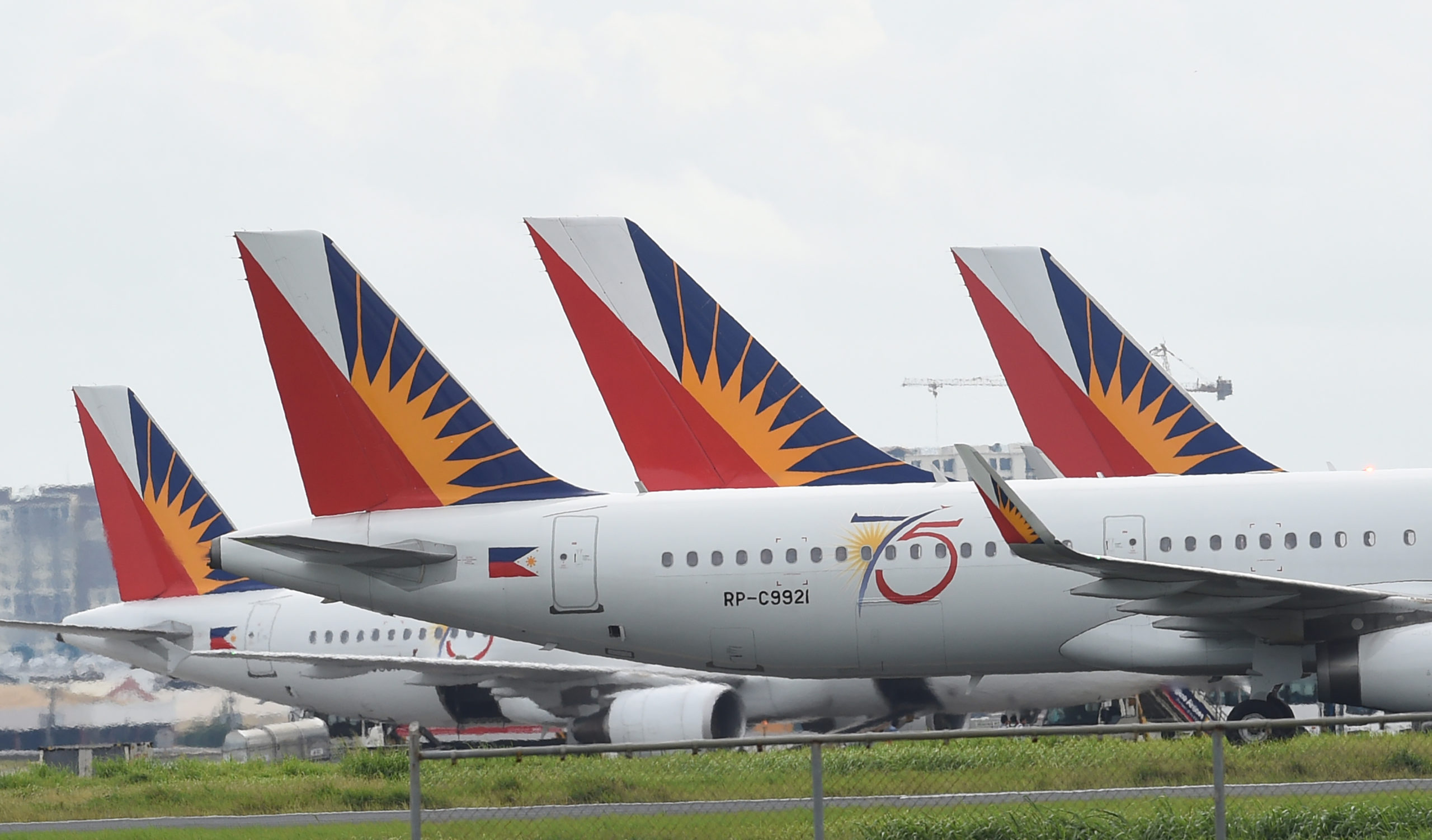
In this photo taken on September 13, 2016, shows Philippine Airlines planes are parked at the international airport of Manila. (Photo by TED ALJIBE / AFP)
MANILA, Philippines — Philippine Airlines (PAL) is targeting to restore its passenger volume to prepandemic level this year as it lines up new routes and expands aircraft fleet to grow capacity amid travel momentum.
Stanley Ng, president and chief operating officer of the flag carrier, told the reporters last week they were aiming to service around 16 million passengers this year to achieve such goal.
The carrier saw its passenger volume soar by 58 percent to 14.68 million last year. Its operated flights grew by 36 percent to 105,294 for the period.
Prior to the pandemic, or in 2019, the Lucio Tan-led airline flew 16.76 million passengers. Volume has gone down since the COVID-19 restrictions grounded flights to mitigate the spread of the virus.
READ: Airline passenger volume soared by 55% in 2023
But PAL, along with other airlines, has been seeing better numbers since the reopening of the economies across the world. This even led to the so-called revenge travel phenomenon or the pent-up demand for leisure travel after years of being locked down.
Revenge travel
Taking advantage of the sustained travel momentum, PAL recently announced the launch of its direct flights between Manila and Seattle by Oct. 2. This route will be offered thrice weekly.
Seattle will be PAL’s sixth route to the United States, after Los Angeles, San Francisco, New York, Honolulu and Guam. The new route can also serve as a gateway to Washington and Oregon.
READ: PAL set to fly to Seattle
Along with this, PAL is looking at reviving old routes, including Cebu-Osaka and Manila-Sapporo, this year to service the growing demand for flights to Japan.
PAL has budgeted $450 million this year for its capital expenditures, allocating 80 percent of the funding to the refurbishment of its A321ceo units, maintenance and upgrades of other jets and payments to new aircraft order.
The flag carrier is expecting delivery of 13 Airbus 321-231 neo (new engine option) aircraft between 2026 and 2029. It is also set to receive nine Airbus A350-1000 jets between 2025 and 2027.
The airline currently operates a 78-jet fleet. It flies to 39 international destinations and 33 domestic locations. INQ

